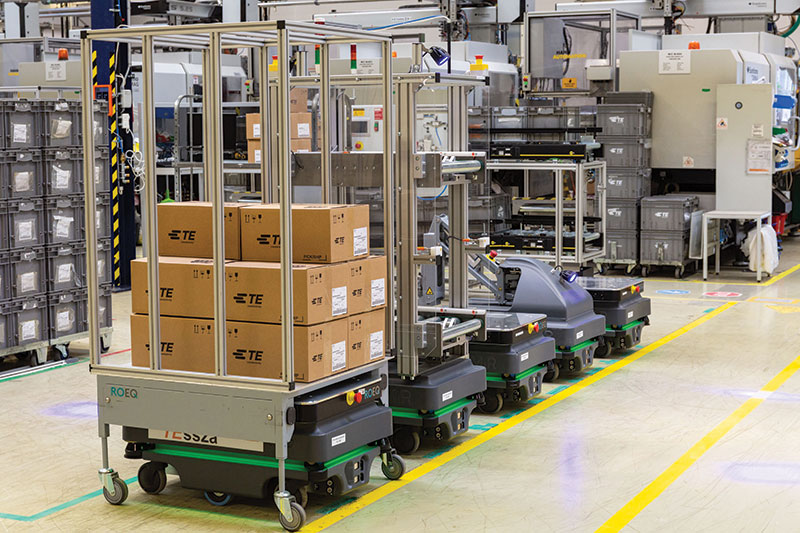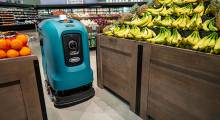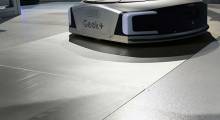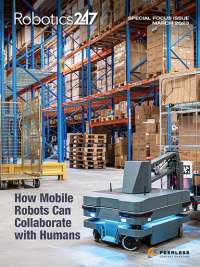More companies with materials handling operations are turning to autonomous mobile robots, or AMRs, to automate processes like raw material container movements in a flexible manner, without the need for fixed infrastructure.
AMR vendors typically offer fleet software to manage routes and missions and monitor fleet productivity, making mobile robots relatively easy to deploy. However, to get the most from AMRs, mobile robotic equipment (MRE) has emerged.
MREs such as top rollers and top modules can help user organizations achieve higher effective payloads from AMRs, as well as help the robots interoperate with fixed automation like conveyors or other machinery.
TE Connectivity, a Tier 2 supplier to global automotive supply chains, is among the companies benefitting from AMRs enhanced with MRE modules at a manufacturing plant it operates in Esztergom, Hungary. To support its production activities for a variety of clients, the company needs to move raw materials into production work areas and finished goods to other parts of the facility.
TE pursues efficiency with robotics
Back in 2019, TE’s Hungarian plant was experiencing problems in moving material due to the inefficiency of its existing systems, which had reached limits. Difficulties in securing enough manual material handlers made the situation more challenging. Digital transformation is part of TE’s goals, so the company decided to investigate mobile automation to address the issue.
TE’s staff began to assess its options, looking for a flexible system that was easy to operate and adapt. Safety was also a major consideration because of the narrow traffic routes in the plant and frequent changes in internal layout and tasks, as well as the continuous movement of raw materials, finished products, and people on the factory floor.
To determine the best robots for its needs, TE effectively turned its plant into an industrial test environment, experimenting with multiple systems simultaneously. The search led the decision to deploy a fleet of AMRs from Mobile Industrial Robots (MiR) combined with MRE from ROEQ (short for “Robotic Equipment”) to automate some key processes.
The operation uses a combination of MiR200 AMRs combined with ROEQ TMC300 top modules, carts, and docking stations. The top modules communicate with the AMRs. Meanwhile, the carts carry materials, with the cart designed to distribute load weight, effectively boosting each AMR’s payload capacity while contributing to enhanced fleet productivity.
MiR fleet and ROEQ MRE digitize supply chain
“Our fleet consists of six MiR200s, most of which carry raw materials and finished products between the warehouse and one of the value streams,” explained Gábor Miszler, continuous improvement analyst at TE. “What we have is a semi-automatic plant, as missions are launched by the employees who also have to move the carts connected to the robots both in the production area and in the warehouse. Therefore, simple docking and ease of use were placed high among our expectations regarding the modules.”
The six MiR200s perform two types of tasks. Five of the AMRs supply raw materials and finished products between the warehouse and the given value streams. The sixth AMR works in a fully automated setup with a special, custom-made module attached.
An automatic packaging station next to the injection-molding machine counts the finished products. It calls the robot automatically when the storage compartment is full.
As part of the mission, the MiR200 picks up an empty bin, replaces it with a full one, and then transports and stores it in the warehouse. After an employee sets up and launches the robots directly using the MiR software, there is no need for human intervention.
The ROEQ TMC300 top module, with ROEQ cart and docking station, provided TE with a standardized solution that was easy to integrate since both the top module and the accompanying ROEQ Assist software are fully compatible with MiR’s system.
With this integration, employees launching the missions do not have to learn how to operate two systems, and on top of that, regularly occurring tasks can be preprogrammed, said the companies.
“This is precision technology,” said Miszler. It was obvious from the first glance that it has been developed specifically for these devices.”
TE to build optimized space
The TE Esztergom plant currently uses three ROEQ TMC300 top modules, 15 ROEQ 300E Easy-Pull-Out carts, and 10 easy locking docking stations. The company is currently building a new production space optimized for AMR characteristics.
“Our achievements definitely encourage us to expand with automation,” said Miszler. “Our new production hall, currently under construction, has been designed with a layout already optimized for robots.”
“We wish to expand the automated injection-molding technology and further automate materials handling and warehousing by deploying the robots in more and more applications,” he said.
About the Author
Follow Robotics 24/7 on Linkedin
About the Author
Follow Robotics 24/7 on Linkedin
Article topics
Email Sign Up




















